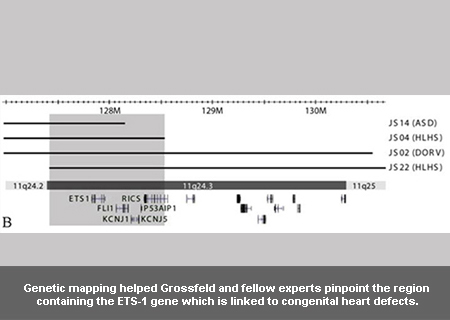A congenital heart defect (CHD) is claimed to be a fault in the structure of the heart and vessels of a newborn. Pertaining to the above topic, a study from the UC San Diego, School of Medicine and colleagues have supposedly detected a new gene ETS-1 that seems to be associated with human congenital heart defects.
This study apparently supplies significant insights into some of the most common types of congenital heart defects in humans. This also comprises of ventricular septal defects and potentially hypoplastic left heart syndrome, a uniformly fatal heart irregularity.
Paul Grossfeld, MD, associate professor of pediatrics for the UC San Diego School of Medicine and pediatric cardiologist for Rady Children’s Hospital-San Diego, commented, “Identification of this gene may have implications for prevention of some of these most common types of congential heart defects.”
The study authors conducted high-resolution chromosomal microarray mapping on human patients apparently detected with the 11q- phenotype. By means of a grouping of human genetics and useful studies in hereditarily engineered mice, the experts could identify ETS-1 as a gene for causing at least a division of the heart defects that crop up in 11q- and the common human population.
Jacobsen syndrome is also called 11q terminal deletion disorder (11q-). It is apparently set apart by a characteristic facial appearance. This rare chromosomal disorder is supposedly derived from the incomplete loss of one copy of human chromosome number 11. It is the loss of genes that could result in the various clinical tests linked to 11q. They are namely congenital heart disease, low platelet counts, developmental and behavioral issues, gastrointestinal, urinary and ophthalmologic abnormalities and failure to flourish and decelerate development.
Paul Grossfeld remarked, “Nearly 15 years ago, in my first month of pediatric cardiology training at UC San Diego, I came across my first patient with 11q-. To this day, I still care for this child.”
He also mentioned that he hopes that they now have a more defined path to understand, and perhaps prevent some forms of congenital heart disease.
The study was published in the journal of Human Molecular Genetics.

